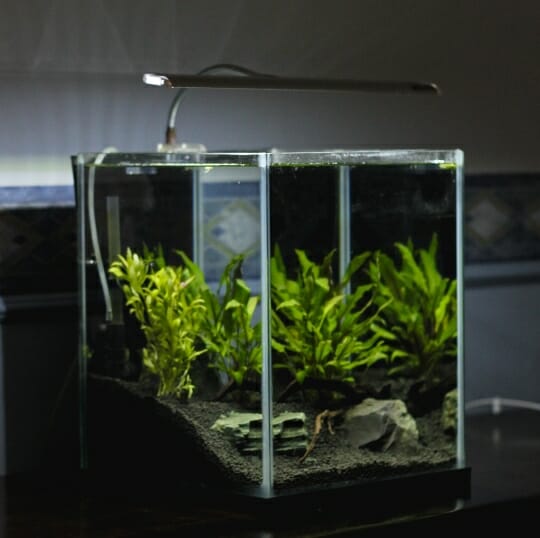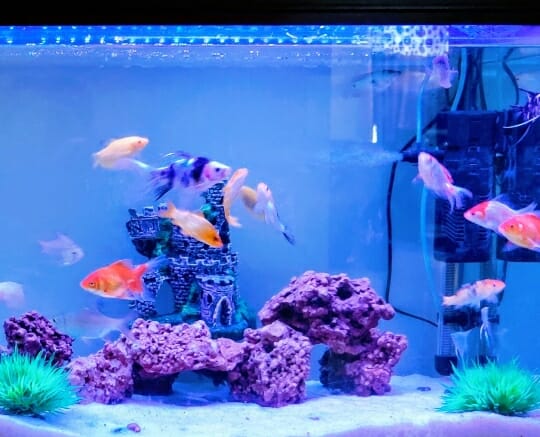Aquarium Lighting T5 vs. LED: Comparison and Differences

Aquarium lights play an essential role in the health and well-being of your fish and reefs. By providing the right light spectrum, you can help your fish absorb crucial nutrients and produce healthy eggs. You can also help keep your coral reef thriving by providing the right environment for its coral.
If you are pondering between a T5 fluorescent light fixture and LED lighting for your aquarium, the answer is that LED fixtures are better. The main reason is that LEDs emit less heat than T5 lights, which means they can be placed closer to the water surface without causing problems. They also last longer and require fewer replacement bulbs than T5 lights.
Table of Contents
What Is LED Lighting?
LED stands for Light Emitting Diode. LEDs are light bulbs that use electricity to generate visible light. They emit less heat than traditional incandescent bulbs, which means they can be used closer to the water surface without causing problems and last longer with fewer repairs or replacements. In addition, LEDs use far less energy than traditional bulbs, which allows for longer life and more savings in the long term. And LED lights use minimal power, so you can incorporate them into any lighting system without investing a ton of money upfront.
Why Should You Choose LED Over T5?
Here are the main reasons why LED lighting is a better option for aquariums than T5HO fluorescent lights:
- LED fixtures to use less energy than T5 fixtures, meaning they require less maintenance and are more cost-effective in the long run.
- LEDs emit very little heat, so you can use them closer to the water surface without causing problems. This is great for those who want to create an immersive experience for their fish by providing them with a bright and colorful environment while reducing overall stress levels in the aquarium ecosystem.
- LED fixtures typically last longer than T5 fixtures, which means you will save money in the long run and do not require as many replacement bulbs, making them a more economical option overall.
Differences Between LED vs. T5
LED vs. T5: User-Friendliness
One of the main reasons LED lighting is becoming increasingly popular in aquariums is that it is user-friendly. Traditional T5 lighting fixtures can be confusing for novice aquarists, and many people find them challenging to work with. LEDs are much easier to set up and use, making them ideal for just starting a hobby or who want an easy job. In addition, T5 fixtures are more challenging to use than LEDs because the cords are shorter, and there are fewer buttons on a LED unit. For this reason, many experienced aquarium hobbyists prefer LEDs over T5s.
LED vs. T5: Light Distribution
Another main difference between LED and T5 lighting is their light output. LEDs produce a brighter, more powerful light than T5s, which can be helpful if you want to create a bright environment for your aquatic plants. Additionally, LED fixtures tend to have a wider light spread, illuminating an entire tank rather than just the area in front of the institution.
LED vs. T5: Aquatic Life Health
One of the main benefits of LED lighting is that it damages coral and live plants very little, in contrast to T5 fixtures, which can cause bleaching and even death for some corals. Furthermore, LED light produces a more fantastic color than traditional T5 lighting, which can help improve the health and coloration of algae-dominated tanks.
LED vs. T5: Cost of Value
One of the main advantages of LEDs over T5s is their lower cost of ownership. LED lights typically run on less energy than T5 lights, which can help you save money on your electricity bill. Additionally, LEDs do not produce as much heat as T5 fixtures, which can be helpful if you live in a hot climate.
LED vs. T5: Control
One of the main advantages of LED lighting is that it is much more controllable than T5 fixtures. You can set the intensity and color temperature of LEDs, which can be helpful if you want to create specific colors for your aquarium. Additionally, LED lights typically have a wider spread of light than T5s, which can illuminate an entire tank rather than just the area in front of the fixture.
When to Use LED Lighting in Your Aquarium?
While LED lighting is an excellent option for many aquariums, a few things to consider when choosing this type of lighting. Here are some dos and don’ts of using LED aquarium lighting:
- Do use LEDs that have been certified by an accredited testing lab as safe for marine fish. Many counterfeit LED lights available today do not meet these safety standards, leading to injury or even death for your aquarium fish.
- Use LED lights in a drift or near the water surface to mimic natural sunlight as closely as possible. LEDs positioned too high above the tank can cause glare. Too little light will produce an unhealthy environment with reduced growth rates in aquatic plants and diminished photosynthesis by marine organisms, throwing off their balance.
- Don’t over-light your aquarium with LEDs; using just the right amount of light will provide the perfect balance for your fish and coral.
- Consult with a professional to find the best-LED aquarium lighting solution for your specific reef or saltwater tank setup. A qualified Aquarist can recommend the correct type of fixture, bulb, and PAR level for your aquarium.
